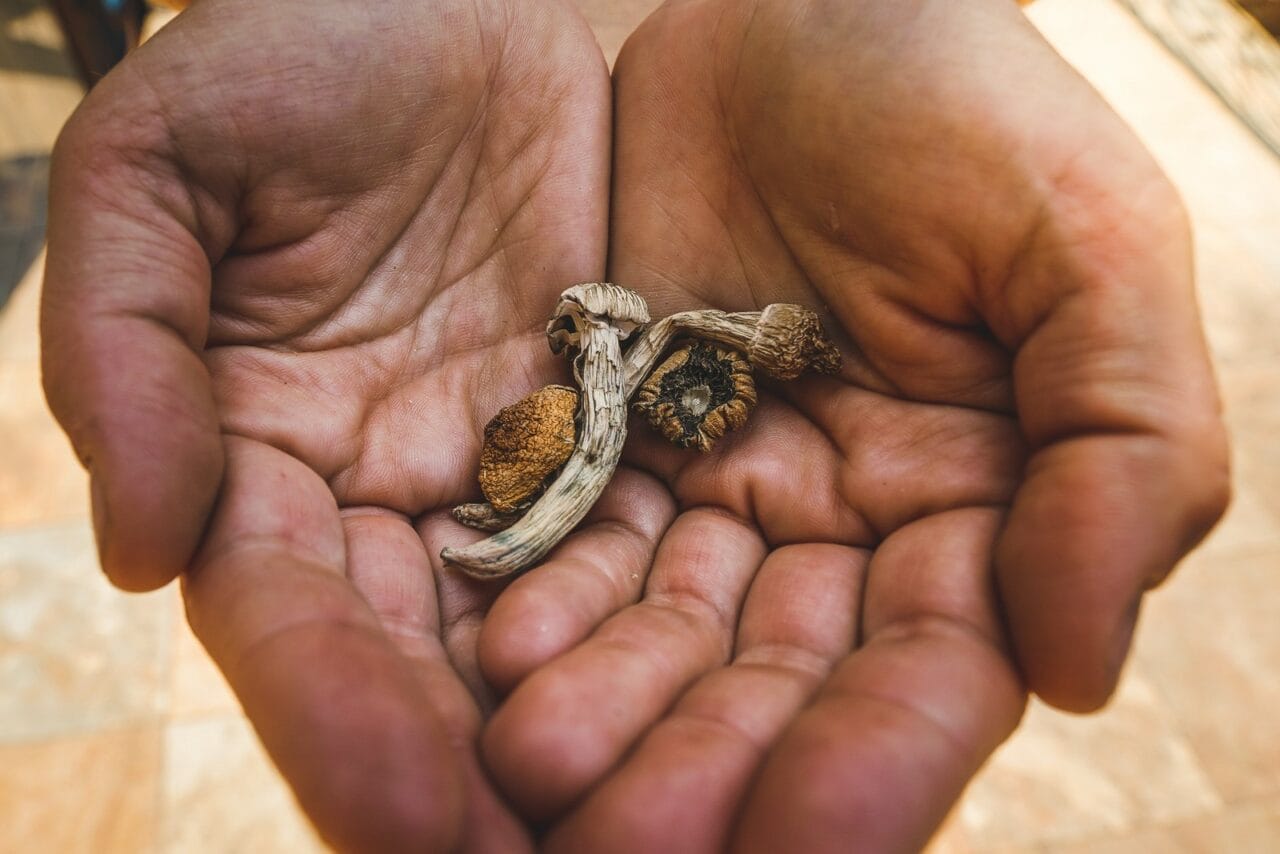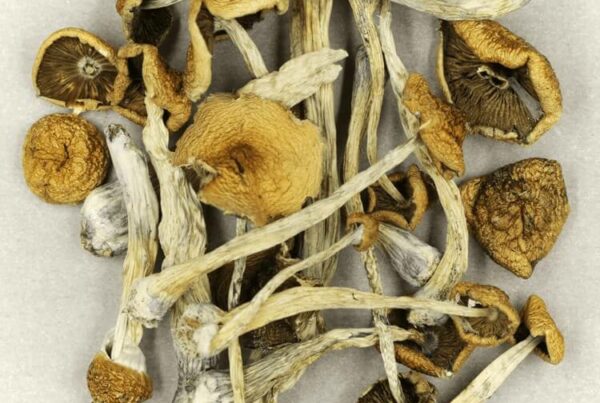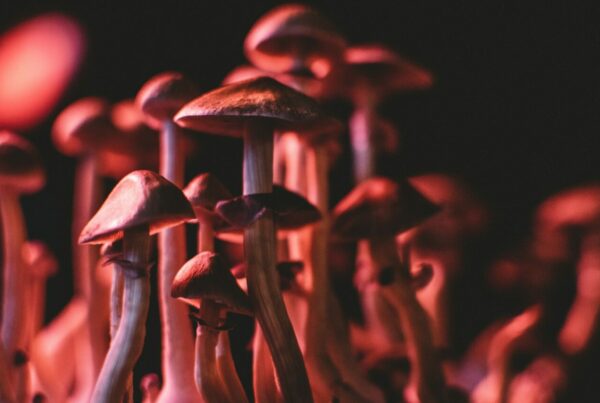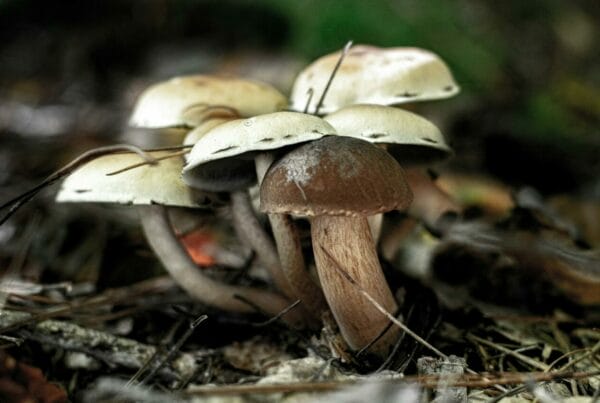Have you ever considered trying dried shrooms? These psychedelics are gaining popularity in today’s market. But you might be unsure if they’re the right choice for you.
It’s perfectly normal for beginners to question which psychedelic to begin with. Let us help you understand how dried mushrooms stand out from other substances and why they could be an excellent choice for your maiden psychedelic voyage.
[toc]Key Insights:
- The primary active ingredient in Psilocybe, it’s the most studied psychedelic for mental health due to its safety, low potential for misuse, and brief duration of effects.
- The most common variant is dried Psilocybe, which retains potency and extends shelf life.
- Psilocybin stimulates the serotonin 5-HT2A receptor, resulting in heightened perception, vivid imagery, complex hallucinations, and temporal distortions.
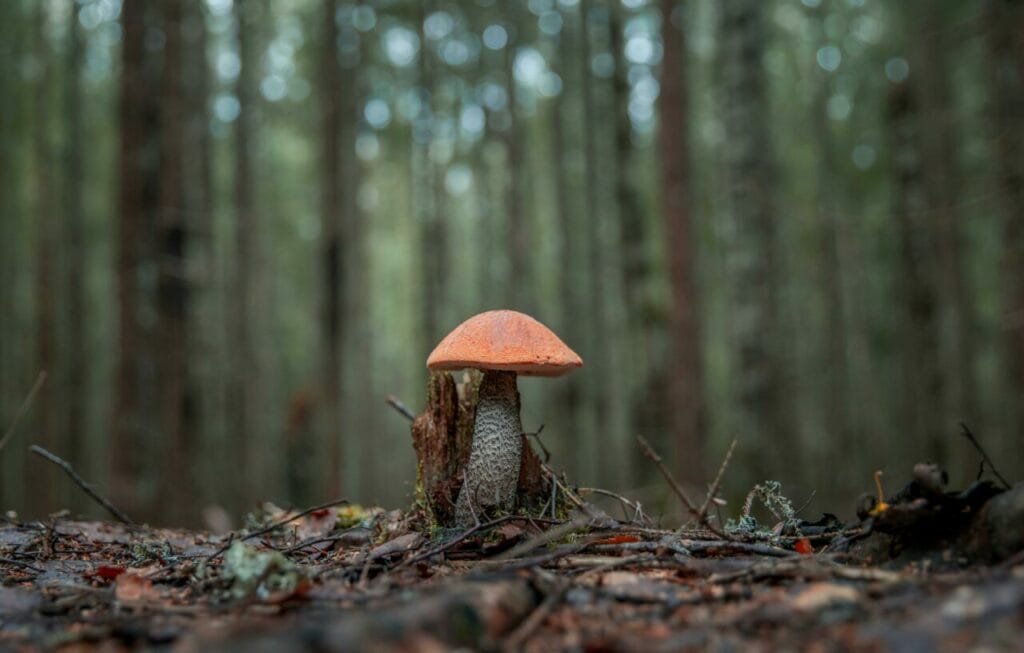
Psilocybin Mushrooms: An Exploration of the Psychedelic Fungi Kingdom
A psilocybin mushroom contains the mind-altering compounds, psilocybin and psilocin, responsible for the hallucinogenic effects experienced by users. The most recognized species, Psilocybe cubensis, is identified by its light brown cap, dark spots, and distinctive shape. Several other species within the Psilocybe genus also produce these compounds.
Beware of certain toxic mushrooms that mimic the appearance of Psilocybe and contain harmful toxins. That’s why we strongly discourage wild mushroom foraging.
Historically, various mushrooms played a significant role in Central American spiritual practices. Presently, they are under investigation for their potential therapeutic applications in mental health disorders, including substance abuse conditions.
Preparation and Preservation: The Dried Variant
The most commonly available form of Psilocybe is the dried type. Dehydration is key for preserving potency and extending shelf life. Fresh mushrooms are typically dried using a food dehydrator or placed on a wire rack in a cool, dry location.
This process is essential for removing excess
Drying magic mushrooms is essential to prevent moisture build-up, which could lead to mould growth and weaken their active compounds. Once correctly dried, these mushrooms can be stored for future use.
Below is a step-by-step guide on how to efficiently dry and store magic mushrooms:
- Use a suitable food dehydrator or a wire rack to thoroughly dry the mushrooms.
- Preserve them in airtight containers to maintain their potency and shield them from excess moisture.
- Store them in a dry, cool place to preserve their psychoactive properties.
- Avoid exposure to direct sunlight to prevent degradation.
- Inspect regularly for mould or dark spots, as these are indicators of spoiling.
Comparison Between Psilocybe Cubensis and Other Psychedelics
Other than dried mushroom products, there are a variety of psychedelic products available online. Each of these substances affects the body differently and can be administered in various ways. Some of these products, like psilocybin, are classified as traditional hallucinogens.
| Substance | Origin | Physical Effects | Research Indications | Duration |
| Psilocybin | Occurs naturally in over 200 mushroom species | Enhances perception, causes hallucinations, alters sense of time | Used in research for Depression, Anxiety, PTSD, OCD, Cluster headaches, Alzheimer’s disease | 4-6 hours |
| DMT | Naturally found in plants like Psychotria viridis | Incites profound spiritual experiences, visions, auditory hallucinations | Studied for use in Depression, Addiction | 15-30 minutes |
| LSD | Synthetic, first produced by Albert Hofmann in 1938 | Enhances emotions, alters perception, induces auditory and visual hallucinations | Researched for use in Depression, Anxiety, Addiction, Cluster headaches, Alzheimer’s disease, Tourette’s syndrome, ADHD | 8-12 hours |
| MDMA | Synthetic, first synthesized by Anton Köllisch in 1912 | Increases serotonin, dopamine, norepinephrine, and possibly oxytocin release | Studied for potential use in PTSD, Autism spectrum disorder, Obesity, Narcolepsy, ADHD | 3-6 hours |
| Ketamine | Synthetic, first synthesized by Calvin L. Stevens in 1962 | Acts as an anesthetic, and induces psychedelic effects at high subanesthetic doses | Researched for potential use in Depression, Bipolar disorder, Anxiety, Suicidal ideation, Addiction, Autism spectrum disorder, Chronic pain, Arthritis, Fibromyalgia | 1-3 hours |
Grasping the Body’s Response to These Substances
The ways in which these substances function are theoretical, based on observed outcomes. These theories offer some understanding of how the substances might exert their effects, but they do not offer a comprehensive understanding of the underlying mechanisms at play.
- Psilocybin: It easily stimulates the serotonin 5-HT2A receptor, leading to heightened perception, vivid imagery, complex hallucinations, and time distortions. It also instigates alterations in thalamic gating and heightened prefrontal cortex activity.
- DMT: Its effect on serotonin receptors is just one aspect of its overall impact, the full scope of which remains elusive. While the serotonin receptor is important, it cannot wholly account for all the effects of DMT.
- LSD: It functions in the serotonergic system in the Dorsal Raphe, attaching to the 5-HT2A receptor as a partial agonist and the 5-HT1A receptor as a full agonist.
- MDMA: It triggers an immediate feeling of joy by facilitating the release of dopamine and serotonin.
- Ketamine: Its exact mode of action is still uncertain. Its antidepressant effect may be due to the blocking of NMDA receptors on neurons, although selective inhibition of NMDA receptors on GABAergic interneurons and suppression of AMPA receptors may also contribute.
What Results Can One Expect from Psychedelic Mushrooms?
The mental and physical reactions can vary significantly based on dosage, environment, and the individual’s mental state. Common experiences associated with the consumption of psychedelic mushrooms include:
- Visual and Auditory Hallucinations: Consumers may perceive patterns, hues, and shapes that are not present in reality.
- Altered Time Perception: Time may seem to either stretch or shrink.
- Changed Perception: Sensory experiences may be intensified or distorted.
- Emotional Swings: A wide range of emotions, from happiness to anxiety.
- Spiritual Insights: Experiences of a spiritual or mystical nature.
- Physical Effects: Examples include increased heart rate and blood pressure, or sensations of nausea
When used with care, this substance is considered safe. However, if not adequately prepared, some users may have unpleasant experiences. More seasoned users may find large doses to be effective, but beginners who try to consume substantial amounts may experience a “bad trip.”
Controlling your experience with this substance is straightforward. Choose a peaceful, quiet environment and enlist a sober “trip guide” for support.
A Preferred Choice Over Other Substances
Many health practitioners prefer dried shrooms for their long shelf life and easy dosage. Their shorter duration and more manageable intensity make them an excellent option for those new to psychedelic therapy. They are also more natural than other synthetic hallucinogens, except for DMT.
Distinguishing the benefits of different compounds can be challenging, as many clinical studies produce similar outcomes, particularly between LSD and psilocybin. The latter is the most extensively researched psychedelic for mental health concerns, mainly due to its strong safety profile, low abuse potential, and short perceptual trips.
Health Benefits
- This natural compound might help alleviate “cognitive rigidity,” reduce self-defeating thoughts, and promote self-compassion.
- In 2022, a study found that a single 25 mg dose reduced depression scores in individuals with treatment-resistant depression. A 2023 study reported significant and lasting decreases in depressive symptoms with the combined use of regulated substances and psychotherapy.
- A 2022 clinical trial found that psilocybin-assisted psychotherapy significantly reduced the number of heavy drinking days over an eight-month period compared to a placebo.
- A 2017 study published in the American Journal of Drug and Alcohol Abuse indicated that two to three doses, along with cognitive behavioural therapy (CBT), helped 10 out of 15 participants to stop smoking for a year.
- In a 2022 pilot study published in Biological Psychiatry, four out of five patients with anorexia reported an improvement in their eating disorder symptoms after a single dose of shroom with psychotherapy. Two of them also reported a reduction in anxiety.
- Preparation Phase: This phase includes one or more sessions, each lasting 1-6 hours, with a facilitator. These sessions aim to address any concerns, set your objectives, and establish clear expectations. Their goal is to build trust and create a safe atmosphere.
- Dosing Phase: This phase lasts for about 5-8 hours. During this period, you will be lying down with an eye mask on, listening to a preselected playlist. A therapist will be with you throughout the entire experience.
- Integration Phase: This phase includes follow-up meetings designed to assist you in understanding and processing your experience. These sessions, distributed over multiple meetings, last several hours each.
Does buying shroom products offer more value than other substances?
Dried fungi are considerably cheaper than LSD products. For example, you can buy 3.5 grams for roughly $20. Conversely, the cost of LSD in gel tabs varies depending on the dosage. For instance, six tabs each containing 100 micrograms of LSD could cost around $90.

